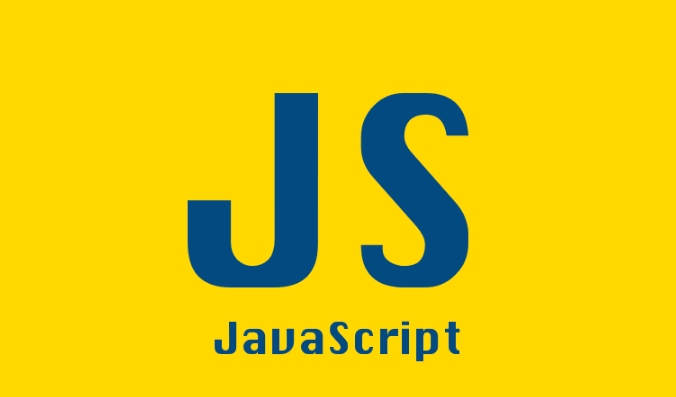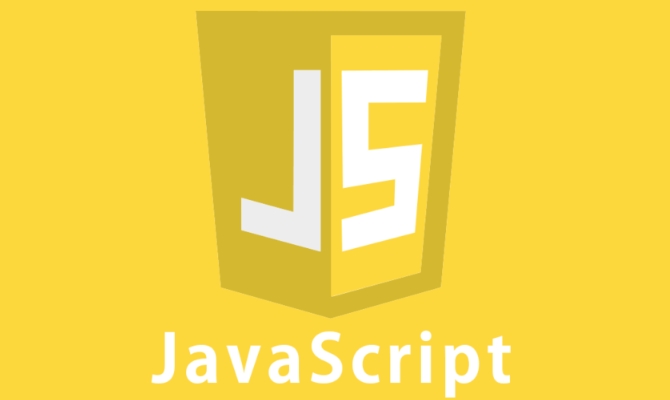Advanced Conditional Types in TypeScript
TypeScript's advanced condition types implement logical judgment between types through the T extends U? X: Y syntax. Its core capabilities are reflected in the distributed condition types, infer type inference and the construction of complex type tools. 1. The conditional type is distributed in the bare type parameters and can automatically split the joint type, such as ToArray

Advanced Conditional Types of TypeScript are one of the most powerful and flexible parts of the type system. They allow you to dynamically generate new types based on relationships between types, and are often used to build complex type tools, type guards, and generic abstractions. Understanding these features will allow you to write safer and smarter type code.

Here are some key concepts and practical tips that will take you into the deep understanding of advanced condition types.
1. Syntax and basic principles of conditional types
The syntax of conditional types is similar to that of JavaScript's ternary operators:

T extends U ? X : Y
Meaning: If type T can be assigned to U , then the result type is X , otherwise it is Y
example:

type IsString<T> = T extends string ? true : false; type A = IsString<'hello'>; // true type B = IsString<42>; // false
This seems simple, but its true power is reflected in combination with generics, union types, and distributed conditional types.
2. Distributed Conditional Types
When the conditional type acts on a generic and the generic appears to the left extends , TypeScript will automatically "distribute" the union type.
type ToArray<T> = T extends any ? T[] : never;
If you pass string | number , TypeScript will disassemble it:
ToArray<string | number> // Equivalent to: // (string extends any ? string[] : never) | (number extends any ? number[] : never) // The result is: string[] | number[]
✅ This "automatic distribution" only occurs on naked type parameters. If you wrap
Tin a tuple or object, such as[T] extends [any], the distribution will be closed.
Purpose: Commonly used to process each item in a joint type separately, such as the extraction/filter type.
3. Type filtering and extraction tools
With distributed conditional types, we can build powerful type tools.
Extract function type
type GetFunction<T> = T extends (...args: any[]) => any ? T : never; type FuncsOnly = GetFunction<string | () => number | number | (s: string) => void>; // Result: () => number | (s: string) => void
Exclude certain types (similar to Exclude )
type Exclude<T, U> = T extends U ? never : T; type NoString = Exclude<string | number | boolean, string>; // number | boolean
This is how TypeScript's built-in Exclude<T, U> is implemented.
Extract certain types (similar to Extract )
type Extract<T, U> = T extends U ? T : never; type OnlyStringOrNumber = Extract<string | number | boolean, string | number>; // string | number
Filter null/undefined (similar to NonNullable )
type NonNullable<T> = T extends null | undefined ? never : T; type A = NonNullable<string | null | undefined>; // string
4. infer : Infer type in conditional type
infer is a weapon for "pattern matching" and extracting subtypes in conditional types.
Extract function return value type (similar to ReturnType )
type ReturnType<T> = T extends (...args: any[]) => infer R ? R : never; type R = ReturnType<() => string>; // string
Extract array element type (similar to ElementType )
type ElementType<T> = T extends (infer U)[] ? U : never; type Item = ElementType<number[]>; // number type Item2 = ElementType<string[]>; // string
Extract the parsed value of the Promise (similar to Awaited )
type UnwrapPromise<T> = T extends Promise<infer U> ? U : T; type Value = UnwrapPromise<Promise<string>>; // string type Value2 = UnwrapPromise<number>; // number
infer can appear in tuples, function parameters, return values, object properties, etc., to realize complex type deconstruction.
5. Practical Advanced Mode
1. DeepReadonly
type DeepReadonly<T> = {
readonly [K in keyof T]: T[K] extends object
? T[K] extends Function
? T[K]
: DeepReadonly<T[K]>
: T[K];
};Here we use the condition type to determine whether the field is an object and avoid recursion of the function.
2. Function overload parsing (simplified signature)
type FirstParam<F> = F extends (arg: infer P) => any ? P : never; type ID = FirstParam<(id: string) => void>; // string
3. Joint transfer cross type (advanced skills)
Sometimes you want to convert string | number to string & number (although the result is never ), but it is more common to use "inverter" processing for function parameters.
type UnionToIntersection<U> =
(U extends any ? (k: U) => void : never) extends (k: infer I) => void
? I
: never;
type T = UnionToIntersection<{a:1} | {b:2}>; // {a:1} & {b:2}This technique is often used to "merge" multiple types in type derivation.
6. Common traps and precautions
never will be ignored in union type
type T = string | never; // equivalent to string
Therefore, it is effective to use
neverto "filter out" the type inExclude.Condition types are lazy
Conditional types are calculated only when instantiated. For example:
type Foo<T> = T extends string ? string : number; type A = Foo<any>; // type is string | number
Because
anyandstringare "fuzzy", TypeScript will conservatively returnstring | number.Never's special behavior
neveris a subtype of all types, so in the conditional type:type T = never extends string ? true : false; // true
But this does not mean that
neveris a string, but that is the type system rules.
Summarize
Advanced conditional types are at the heart of TypeScript type programming. Combining
extends,inferand distributed behavior, you can:- Filter, extract, convert types
- Implement type-level "logical judgment"
- Build complex generic tools (such as
Pick,Omit,ReturnType, etc.)
Although it seems like magic at the beginning, as long as you understand the idea of "type is a set" and "conditional type is a set judgment", you can gradually master it.
Basically that's it. Write more and try more, and you will find that the type system is more powerful than you think.
The above is the detailed content of Advanced Conditional Types in TypeScript. For more information, please follow other related articles on the PHP Chinese website!

Hot AI Tools

Undress AI Tool
Undress images for free

Undresser.AI Undress
AI-powered app for creating realistic nude photos

AI Clothes Remover
Online AI tool for removing clothes from photos.

Clothoff.io
AI clothes remover

Video Face Swap
Swap faces in any video effortlessly with our completely free AI face swap tool!

Hot Article

Hot Tools

Notepad++7.3.1
Easy-to-use and free code editor

SublimeText3 Chinese version
Chinese version, very easy to use

Zend Studio 13.0.1
Powerful PHP integrated development environment

Dreamweaver CS6
Visual web development tools

SublimeText3 Mac version
God-level code editing software (SublimeText3)
 Using XSLT Parameters to Create Dynamic Transformations
Aug 17, 2025 am 09:16 AM
Using XSLT Parameters to Create Dynamic Transformations
Aug 17, 2025 am 09:16 AM
XSLT parameters are a key mechanism for dynamic conversion through external passing values. 1. Use declared parameters and set default values; 2. Pass the actual value from application code (such as C#) through interfaces such as XsltArgumentList; 3. Control conditional processing, localization, data filtering or output format through $paramName reference parameters in the template; 4. Best practices include using meaningful names, providing default values, grouping related parameters, and performing value verification. The rational use of parameters can make XSLT style sheets highly reusable and maintainable, and the same style sheets can produce diversified output results based on different inputs.
![You are not currently using a display attached to an NVIDIA GPU [Fixed]](https://img.php.cn/upload/article/001/431/639/175553352135306.jpg?x-oss-process=image/resize,m_fill,h_207,w_330) You are not currently using a display attached to an NVIDIA GPU [Fixed]
Aug 19, 2025 am 12:12 AM
You are not currently using a display attached to an NVIDIA GPU [Fixed]
Aug 19, 2025 am 12:12 AM
Ifyousee"YouarenotusingadisplayattachedtoanNVIDIAGPU,"ensureyourmonitorisconnectedtotheNVIDIAGPUport,configuredisplaysettingsinNVIDIAControlPanel,updatedriversusingDDUandcleaninstall,andsettheprimaryGPUtodiscreteinBIOS/UEFI.Restartaftereach
 How to use Optional in Java?
Aug 22, 2025 am 10:27 AM
How to use Optional in Java?
Aug 22, 2025 am 10:27 AM
UseOptional.empty(),Optional.of(),andOptional.ofNullable()tocreateOptionalinstancesdependingonwhetherthevalueisabsent,non-null,orpossiblynull.2.CheckforvaluessafelyusingisPresent()orpreferablyifPresent()toavoiddirectnullchecks.3.Providedefaultswithor
 What is a deadlock in Java and how can you prevent it?
Aug 23, 2025 pm 12:55 PM
What is a deadlock in Java and how can you prevent it?
Aug 23, 2025 pm 12:55 PM
AdeadlockinJavaoccurswhentwoormorethreadsareblockedforever,eachwaitingforaresourceheldbytheother,typicallyduetocircularwaitcausedbyinconsistentlockordering;thiscanbepreventedbybreakingoneofthefournecessaryconditions—mutualexclusion,holdandwait,nopree
 Exploring Common Java Design Patterns with Examples
Aug 17, 2025 am 11:54 AM
Exploring Common Java Design Patterns with Examples
Aug 17, 2025 am 11:54 AM
The Java design pattern is a reusable solution to common software design problems. 1. The Singleton mode ensures that there is only one instance of a class, which is suitable for database connection pooling or configuration management; 2. The Factory mode decouples object creation, and objects such as payment methods are generated through factory classes; 3. The Observer mode automatically notifies dependent objects, suitable for event-driven systems such as weather updates; 4. The dynamic switching algorithm of Strategy mode such as sorting strategies improves code flexibility. These patterns improve code maintainability and scalability but should avoid overuse.
![Operating System not found [Fixed]](https://img.php.cn/upload/article/001/431/639/175539300224489.jpg?x-oss-process=image/resize,m_fill,h_207,w_330) Operating System not found [Fixed]
Aug 17, 2025 am 09:10 AM
Operating System not found [Fixed]
Aug 17, 2025 am 09:10 AM
Ifyourcomputershows"OperatingSystemnotfound,"trythesesteps:1.CheckBIOS/UEFIbootorder.2.Verifydiskconnections.3.RepairbootloaderusingWindowsRecovery.4.ReassigndriveletterviaDiskManagement.5.Reinstalltheoperatingsystemifnecessary.
 PS oil paint filter greyed out fix
Aug 18, 2025 am 01:25 AM
PS oil paint filter greyed out fix
Aug 18, 2025 am 01:25 AM
TheOilPaintfilterinPhotoshopisgreyedoutusuallybecauseofincompatibledocumentmodeorlayertype;ensureyou'reusingPhotoshopCS6orlaterinthefulldesktopversion,confirmtheimageisin8-bitperchannelandRGBcolormodebycheckingImage>Mode,andmakesureapixel-basedlay
 Building Cloud-Native Java Applications with Micronaut
Aug 20, 2025 am 01:53 AM
Building Cloud-Native Java Applications with Micronaut
Aug 20, 2025 am 01:53 AM
Micronautisidealforbuildingcloud-nativeJavaapplicationsduetoitslowmemoryfootprint,faststartuptimes,andcompile-timedependencyinjection,makingitsuperiortotraditionalframeworkslikeSpringBootformicroservices,containers,andserverlessenvironments.1.Microna







